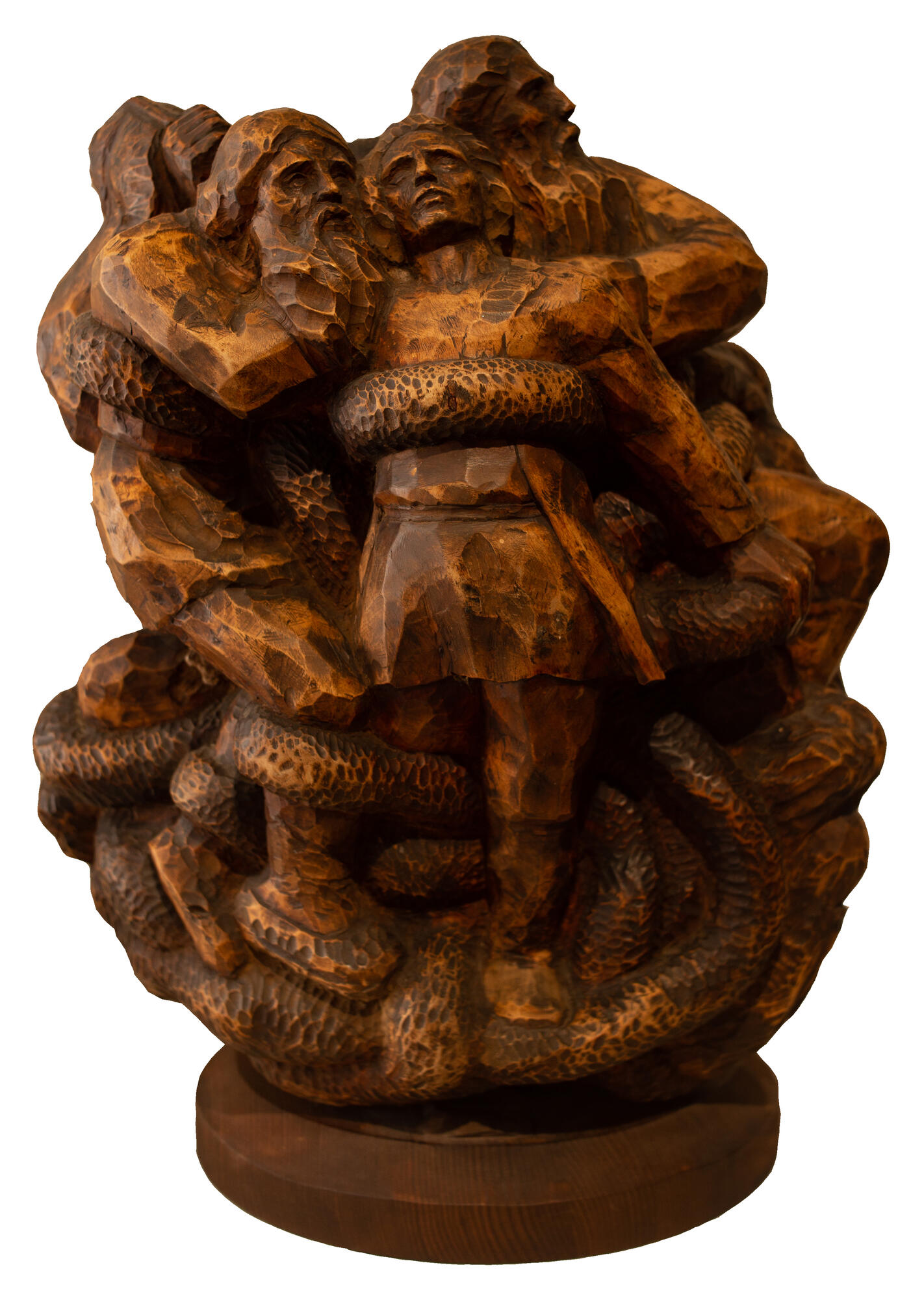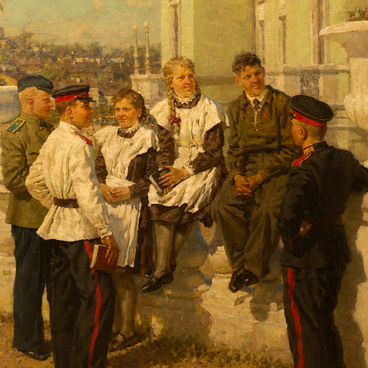For his indoor statues, Kambarov often used wood. The Yekaterinburg Museum houses several statues created by Kambarov during various periods, including the “Red Army Man”, “Partisan”, and “Ural Worker”. The earliest of these works — “The Gordian Knot” — is of particular interest.
The artist created an intricate entangled composition. He portrayed several allegorical characters, including an old peasant, a young worker, a girl, and others. By using allegories, artists depict abstract concepts with the help of special symbols, for example, an elderly man symbolizes old age, while a girl with wildflowers stands for the blooming spring. It is likely that Kambarov’s statue shows various powerful characters representing Russian people. They are tightly bound by a firm rope in the form of a snake.
The term ‘Gordian knot’ is used to describe a very challenging situation, a problem that is sometimes absolutely unsolvable. Using this complicated allegory, Kambarov expressed his perception of the turbulent events of the Russian Revolution and the bloodstained episodes of the Russian Civil War. This was his metaphor of the extremely difficult and desperate situation where people felt completely powerless and even their faith could not help them.
Although the statue was exhibited during the artist’s lifetime, it remained relatively unknown compared to his other works because of its controversial handling of the subject matter. For a long time, the statue was kept by Kambarov’s family. It entered the museum collection in 2014.



